PALEOLITHIC ART MAGAZINE
EUROPA
FOUR-HEADED ROME HERMS
Pietro Gaietto
Director of the website of the Museum of the Origins of Man
Genova, Italy, December, 4 2002
- Description of the four-headed sculptures
- Photographs of the herms.
- Spiritual life and religion.
I want to say first that this description is not an analytical study, but is a set of references to propose a research with the principles and method of archaeoarteology.
It is important to become aware of the connections between the two-faced anthropomorphic sculptures of the Paleolithic and the successive prehistoric ages, with the two, three and four-faced anthropomorphic sculptures of the historical ages, representing deities, and where has been no interruption and no connection with the zoomorphic paintings of the upper Paleolithic and the Mesolithic, and no connection with the art and the religions of the people who have produced graffiti on rocks.
DESCRIPTION OF THE FOUR-HEADED SCULPTURES
I have visited all the museums of Rome with "classic" sculptures, i.e. of historical age, seeing many two-headed sculptures, namely two heads joined for the nape, with every type of coupling: man and woman, bearded and without beard, bearded and bearded, without beard and without beard, bearded and satyrus, etc. I have not found sculptures with three, or four heads.
I have found three sculptures with four heads, two on a bridge, and one on a monument; they are the "Four-headed herms of Janus", and this is the name read on the sign near the bridge.
Two four-headed herms (Figg. 1, 2, 3, 4) are on the Fabricio Bridge, said also of the "Four heads", on the Tevere River, in the archaeological zone of Rome.
The bridge, as told by the historian Dione Cassio, (XXXVII, 45), was built up by the consul and Curator viarum Lucius Fabricius in the 62 BC, as also engraved in an inscription on the arcades: "L. FABRICIUS C. F. CUR VIAR FACIUNDUM COERAVIT"; it is said that the herms were added by Pope Sixtus V (1585-1590: some sources say that the herms were initially four, the fourth then was removed. According to other sources, instead, the herms were inserted in the parapet of the bridge in 1849.
The bridge leads to a small "island", the Tiberina Island, where was the Temple of Aesculapius, God of the medicine, imported to Rome from Greece in order to fight a terrible pestilence (according to other sources, there was before a temple dedicated to Janus; effectively, at the place of the near Basilica of St. Nicola in Carcere - VI century - there were three temples, dedicated to Janus, Juno Sospita and Spes).
The third herma is inserted in the monument-fountain to the poet of Rome Gioacchino Belli (Figg. 5 and 6), situated in the Sidney Sonnino square, Rome; such monument is dated MCMXIII.
The herma inserted in the monument of G. Belli has been removed from the Fabricio Bridge.
I do not know the reasons, for which the herma has been inserted in the monument, but is possible that it is a homage to the poet in order to have written poems or anecdotes about the herms or about Aesculapius or the Tiberina island.
For who loves the sculpture of every time (modern, ancient and prehistoric), this monument to the Poet is exceptional, in how much it joins two works made 2.000 years of distance between them.
Portraits are of two types: that of the Poet is a "physiognomic" portrait, while the portraits of the four heads of the herma are "intentional". The monument, moreover, is interesting for the architecture and the bas-reliefs.
The statue of G. Belli is a "colossus", while the herma is of natural stature.
It seems that the three herms come from the Greece, perhaps of IV century BC, but I am not sure of it.
Each herma has some of the four heads whose facial features are erased. The most probable hypothesis of such disfigurement, is that, during worship rites, the devotees caressed the face, but to learn more, it would be useful to consult studies of historians, who have dealt with the issue.
At the dawn of the history, the sculptures of herms with four heads or four faces were coevals with sculptures with two or three heads or faces, and their spread varied from zone to zone. These types of sculptures are all with religious character, and are derived from the prehistoric two-faced anthropomorphic sculptures.
PHOtOGRAPHIS OF THE HERMS
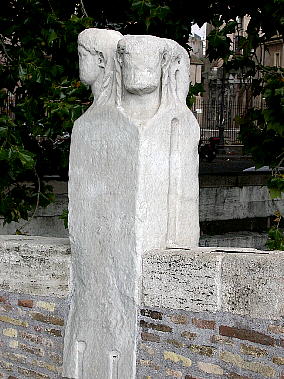
Fig. 1) Four-faced lithic sculpture. Greek herma, IV century B, placed on the Fabricio Bridge, Rome.
(All photographs are by Licia Filingeri, 2002).
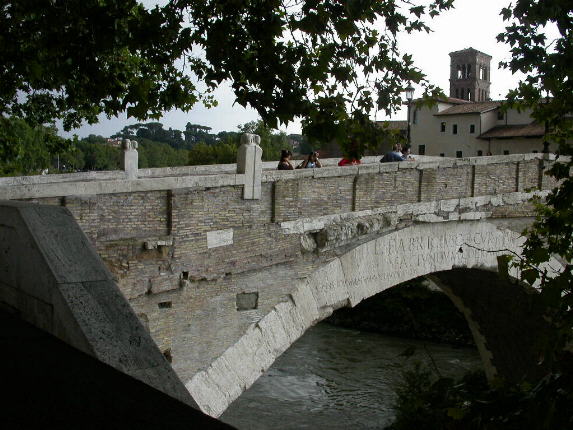
Fig. 2) Fabricio bridge over the Tiber River in Rome with two Greek herms on the parapets
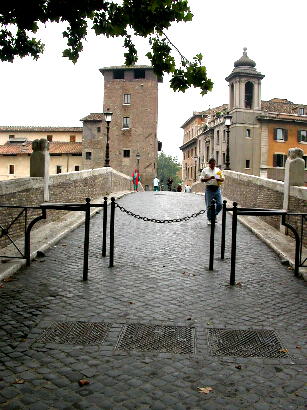
Fig. 3) Fabricio Bridge Tiber River in Rome, and in the background the houses on the island where the Temple of Aesculapius was.
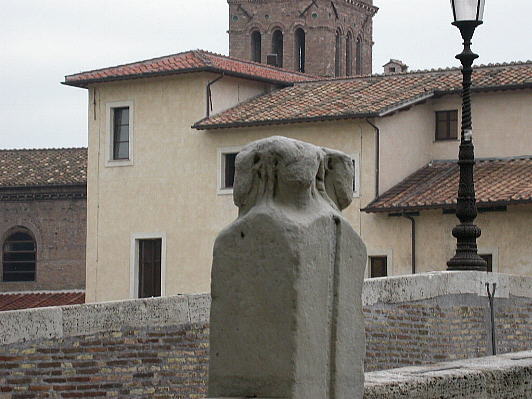
Fig. 4) Herma on the Fabricio Bridge, in Rome.
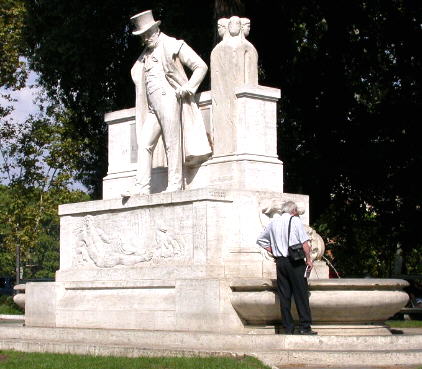
Fig. 5) Monument-fountain to G.Belli poet with greek four-faced herms, situated in Sidney Sonnino square, in Rome. Work dated MCMXIII
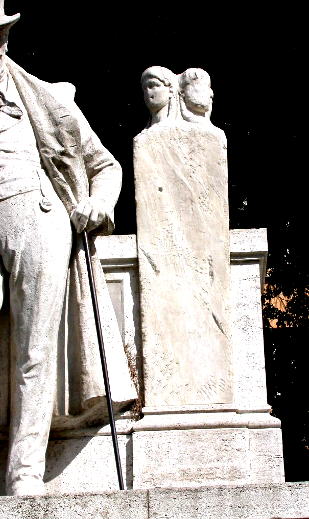
Fig. 6) Four-faced herma inserted in the monument to G. Belli. The features of the face of the head of the right herma are erased, probably by the devotees who caressed it during the entrance to the temple.
SPIRITUAL LIFE AND RELIGION
We know for sure, also from written testimony, that the sculptures with two, three, four heads or faces, were of religious character, that is that they were deities.
In the historical times, over time and in different areas, such deities have changed name, and often also their divine attributions, maintaining their form with two, three or four heads.
For these interpretations of the historical periods it is important to know what has been made by the historians of religions, which moreover give us informations about the diffusion of these cults, and therefore about the diffusion of the sculptures, that almost all went destroyed.
Raffaele Pettazzoni, who was professor of History of Religions at the University of Rome, has been the greatest Italian scholar of religions. From his book "The omniscience of God" (London, 1956; original edition: "L'onniscenza di Dio", Edizioni Scientifiche Einaudi, Turin, 1955) I have taken (pg. 132 - 133) some historical information of religious type on the sculptures with four heads or four faces:
In post-biblical Judaism and in ancient Christianity (especially Syriac) is the tradition of a divine simulacrum with four faces, or four heads, which would have been worshiped by the Jews. This tradition concerns:
- a) the Ba'al of Tyre that Ahab king of Israel introduced in the ninth century BC in Samaria after his wedding with Izebel, daughter of the king of Tyre (The Kings 16. 29 ff.): it is described as "quadriform" by Eustatius of Antioch (about 300 AD);
- b) the idol that Manasseh king of Judah (7th century) commissioned to be built and placed in the temple of Jerusalem (2 Chron. 33. 7), but he removed it when he returned repented from Babylon (2 Chron. 33. 15): in the Syriac version (Pesitta) of 2 Chron. 33.7 it is described as a "four-faced" idol. Ephrem Siro (+ 373 A.D.) in his poem against Julian the Apostate, and Jacob of Sarug (+ 521) in his sermon on "the Fall of the Idols" and in that of Palm Sunday, reproach the Jews for having worshipped a "four-faced" idol, and that this idol was that of Manasseh, and precisely the simulacrum of 2 Chron., is said explicitly in Barhebrew, as well as in George Syncello, Cedreno and Suida (in Greek the name of the four-faced god is given with "Zeus"). In the Talmud, too, the idol of Manasseh has four faces, while in the Syriac "Apocalypses of Baruch" it has five - and an echo of this conception is found in St. Jerome;
- c) the simulacrum of Jahve made by the Ephraimite Micha for his private ( illegal) worship, which came then into the possession of the Danites and later worshipped in Dan-Lajis (Judges 17 and 18): it is, according to Talmud, the same as the idol of Manasseh, and had in fact four faces;
- d) also the "image of jealousy" in the Jerusalem Temple according to Ezek. 8. 3, 5 is identified in Jewish and Christian tradition with the idol of Manasseh, and therefore has four faces.
Index
HOME PAGE
Copyright©2000-2002 by Paleolithic Art Magazine, all rights reserved. 





